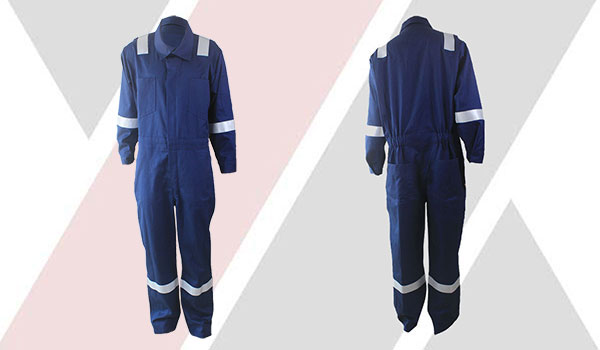


Flame retardant clothing refer to protective clothing that can slow down the spread of flame and make the garment carbonized to form an insulation layer to protect the safety and health of the human body after direct contact with the flame and hot objects. Flame retardant fabrics account for a significant proportion of the consumption of protective textiles due to frequent fires in the home or in public.
Flame retardant clothing performance characteristics
The importance of flame retardant clothing is that it directly faces the harsh and dangerous environment, protects the personal safety of workers and firefighters, and greatly reduces the degree of burns on the human body through the safety protection of fire-retardant work clothing. Increase the chances of rescue, thus protecting the lives and safety of workers. Therefore, the quality of flame retardant clothing is of paramount importance.
The requirements for flame retardant clothing are higher and stricter in production. Most of the existing flame retardant garments are often unsatisfactory in durability, which accelerates the development of safe and durable flame retardant overalls. In this complicated situation, the performance requirements of fire-retardant work clothing that meets the requirements of the times are mainly reflected in the following aspects:
1, The outer layer has permanent flame retardant performance
The outer layer of the flame retardant clothing is a layer directly in contact with fire and heat. It is also the most critical layer related to the performance of the product. At present, there are two ways to process the outer fabric of the flame retardant overalls:
(1) Adding a chemical additive to the fiber or flame-retarding the fabric, that is, adhering the flame retardant to the fabric or the yarn by adsorption deposition, chemical bonding, non-polar van der Waals force bonding or bonding to obtain a resistance Burning effect. The development of this method depends on the development of the flame retardant and the improvement of the process flow.
(2) Improve the thermal stability of the fiber-forming polymer, increase the cracking temperature, inhibit the generation of combustible gas, increase the degree of carbonization, and make the fiber difficult to ignite, such as introducing an aromatic ring or an aromatic heterocyclic ring in a macromolecular chain, linear The reaction between macromolecules becomes a three-dimensional crosslinked structure and the like. This method is associated with the development of some high performance fibers.
2, Good waterproof performance
In general, water is used as a fire extinguishing agent to extinguish fires. Therefore, flame retardant clothing should also have good waterproof performance. If protective clothing such as fire-fighting suits are not waterproof, it will have many adverse effects.

According to the data, the temperature of the fire is between 60 °C and 1100 °C, and the radiant heat is 1.5 Kw/m2•s-200 Kw/m2•s. Therefore, the protective clothing suitable for the fire field must have good thermal protection performance, including direct protection. The thermal conductivity of the fire and the penetration resistance of the radiant heat.
Only a thin, flame-retardant outer layer is not enough. If the thickness of the outer layer material is used to meet the requirements, the cost will be too high. The new flame retardant clothing are generally made of permanent flame retardant short fibers with good performance to make thin felt-like non-woven fabrics. These materials are particularly prominent as thermal insulation properties of thermal insulation materials.
4, Anti-static performance
In the working environment of petrochemical and other industries, static electricity may also become an ignition source, causing fires. Antistatic fibers increase the wearer's safety factor in a flammable and explosive environment, while antistatic fibers can also improve the comfort of clothing. Wear resistance.
5, Good ventilation performance
The fire temperature is high, the heat is large, the firefighters have a large amount of activity, and the human body perspires more. If the protective clothing is poorly breathable, it will make people feel stuffy and suffocating, which will seriously affect the combat effectiveness. At present, the method for solving this problem is a flame retardant fabric using a composite microporous tetrafluoroethylene film. The microporous tetrafluoroethylene film itself is resistant to high temperature, as long as the pore diameter of the micropores is within a certain range, the material is resistant to hydrostatic pressure and gas permeability. When the performance reaches a certain level, it can block the passage of water and smoothly discharge the sweat steam.
Flame retardant clothing are required not only to have flame retardant functions, but also to give them more performance according to the specific application in actual life and production, such as waterproofing, oil-repellent, anti-static, etc., oil-repellent treatment can improve the safety protection products The functionality of the overalls, antistatic treatment, can be used in the refining and chemical industries to prevent serious consequences caused by static electricity.